Saving Belize’s Largest Forest Reserve from Fires
It’s been several weeks of fire-fighting efforts across the country, as an extreme heatwave exacerbates the occurrence of wildfires. On May sixteenth, the Forest Department detected a fire that had broken out at the Mountain Pine Ridge Forest Reserve in Cayo District. As the largest forest reserve in the country, an uncontained fire could have severe, long-lasting effects on wildlife, as well as the neighboring areas. To combat these fires the department launched a collaborative effort to contain and extinguish these flames. While the efforts are still ongoing to manage a few of the fires, the department has reassured us that the situation is under control. For more insight into the process of saving the forest, News Five’s Britney Gordon visited the reserve and with some of the people who were working first-hand to do so. Here’s that story.
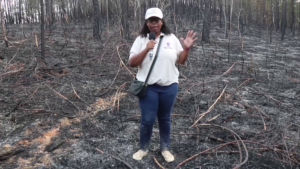
Britney Gordon
Britney Gordon, reporting
“I’m here at the Mountain Pine Ridge Forest Reserve, standing in front of one of the few fires left to contain before it spreads further into the area.” The team at the Belize Forest Department is hoping that the flames will be extinguished by a nearby creek before it can spread into the area and possibly, into Belmopan.”
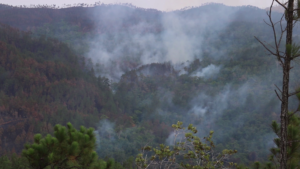 The past seven days have been a continuous effort to extinguish the flames making their way through the Mountain Pine Ridge Forest Reserve, Belize’s oldest and largest forest reserve. First established in 1944, the reserve spans over three hundred square miles and is home to rivers, waterfalls, a variety of fauna and as the name suggests, is brimming with thousands of pine trees. However, this natural resource, beloved by locals and tourists for its picturesque views, was recently put at risk when a wildfire broke and quickly started spreading within the area. The fires, which have been burning since last Wednesday, are believed to have been started by a lightning strike. Amin Bedran, Manager at Bulridge Limited, a sustainable logging company that manages Ridge Reserve, says the team jumped into action right away and has since been able to manage the blaze.
The past seven days have been a continuous effort to extinguish the flames making their way through the Mountain Pine Ridge Forest Reserve, Belize’s oldest and largest forest reserve. First established in 1944, the reserve spans over three hundred square miles and is home to rivers, waterfalls, a variety of fauna and as the name suggests, is brimming with thousands of pine trees. However, this natural resource, beloved by locals and tourists for its picturesque views, was recently put at risk when a wildfire broke and quickly started spreading within the area. The fires, which have been burning since last Wednesday, are believed to have been started by a lightning strike. Amin Bedran, Manager at Bulridge Limited, a sustainable logging company that manages Ridge Reserve, says the team jumped into action right away and has since been able to manage the blaze.
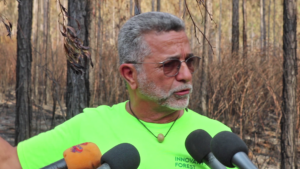
Amir Bedran
Amir Bedran, Manager, Bulridge Ltd.
“The fire started as they mentioned earlier with a lightning all the way by Kinloch. We are, east of Kinloch. The fire continued down towards the dam and we were working on this front. As you can see, if the fire had crossed this line, we are on Baki line. It would have been devastating because it would have burned all the way up to Granite Cairn. There’s no breaks between. The only way you can fight and control a fire in the Pine Ridge is with the roads. You can’t out this with water. You have to fight fire with fire by doing back burns.”
As Bedran mentioned, the fires were not doused with water. Instead, a method called back-burning was used. This process involved burning a counter-set of controlled fires to eliminate the fuel in the path of the approaching flames. Shanelly Carillo Balan, forest officer in charge at the Douglas D’silva Forest Station, explained that in order to create the fire line, which is the barrier to the progression of a wildfire, the team had to quickly open roads. They were able to accomplish this with the help of CISCO Construction.
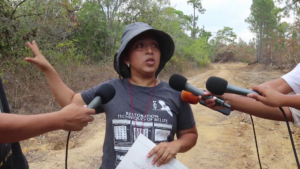
Shanelly Carillo Balan
Shanelly Carillo Balan, Officer in Charge, Douglas D’silva Forest Station
“So at this location where we are right now, we are on line number one which you can see here. This is Douglas D‘Silva. This is where all the camps are, the houses, the offices. The fire was coming south to north, and we had to open this line here as a fire line. The fire was coming in this direction here. So what we had to do is in order to protect the station, the camp on this side, which is very close, we had to back-burn. And this is where you can see the big difference. So when you have the back-burn, you. put it, you make sure that it is done under a controlled environment as much as possible under the conditions that we were, fighting the wildfire and that way we have a fire fighting the wildfire coming back and that way we were able to it helps to make sure that we create a buffer.”
If the team had been unable to contain the fire, it would have put the neighboring camps and resorts at risk. However, they were successful in their mission and that area is no longer a threat.
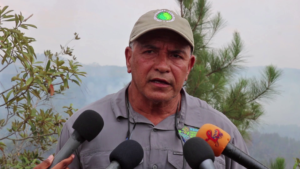
Orlando Habet
Orlando Habet, Minister of Sustainable Development & Climate Change
“The ministry, especially the forest department, which is overlooking these forest fires. It’s a concern for them because it falls under their jurisdiction. However, we must recognize also that some of the fires might be intentional fires because they are agricultural landscape fires, and they escape, and they get into the forest without control. Some of them are permitted fires, like what happens in industry. For example, the sugarcane industry, if it’s not controlled, these also get away and then it causes problems. Here in the Mountain Pine Ridge, concern for us because we know we have apart from the logging concessionaires who are up here, this is a real natural resource for the government and people of Belize, but we also have tourism. So we have the resorts, which are a concern because you have tourists, you have people who come up on weekends to spend time with their families. So certainly, a concern.”
 Although these fires required immediate action to extinguish, fires within the reserve are not uncommon. Every year, the Belize Forest Department and its partners perform what is called a prescribed burn, which is a controlled set of fires set in order to clear debris on the forest floor to preserve the health of the forest and ensure that these decaying materials are cleared should a wildfire occur. The key to a good forest fire is maintaining control. John Pinelo, Deputy Chief Forest Officer at the Forest Department, further explained this process.
Although these fires required immediate action to extinguish, fires within the reserve are not uncommon. Every year, the Belize Forest Department and its partners perform what is called a prescribed burn, which is a controlled set of fires set in order to clear debris on the forest floor to preserve the health of the forest and ensure that these decaying materials are cleared should a wildfire occur. The key to a good forest fire is maintaining control. John Pinelo, Deputy Chief Forest Officer at the Forest Department, further explained this process.
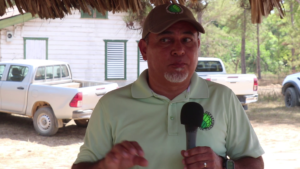
John Pinelo
John Pinelo, Deputy Chief Forest Officer, Belize Forest Department
“In a pine ecosystem, fires are necessary actually, annually we have fires going through. Preferably, we would like to be the ones burning the fires in the cool months, which we call a prescribed burn, and we make sure that we burn the litter that you see on the ground. If we leave this for a number of years, this will start growing, and it becomes a bigger fuel load on the ground. So when we do have fires, it burns really, really hot, and it causes more damage than help. But ordinarily, the ecosystem needs fires. So you don’t want to say that the fire is causing negative effects. It is in some areas, but mostly it’s a good fire we’re having.”
 While the Forest Department led the charge in containing the fires, it was a collaborative effort between multiple stakeholders. The Chalillo Dam is used to generate hydroelectricity for Fortis Belize. As it is situated in Mountain Pine Ridge, the company was quick to offer assistance in the fire response mission. Tedford Pate, Operations Manager at Fortis Belize told us about these efforts.
While the Forest Department led the charge in containing the fires, it was a collaborative effort between multiple stakeholders. The Chalillo Dam is used to generate hydroelectricity for Fortis Belize. As it is situated in Mountain Pine Ridge, the company was quick to offer assistance in the fire response mission. Tedford Pate, Operations Manager at Fortis Belize told us about these efforts.
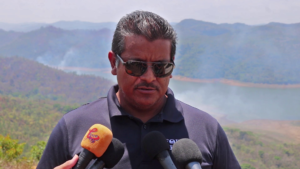
Tedford Pate
Tedford Pate, Operations Manager, Fortis Belize
“We drove all the way to the location to see the extent of the fire, and we noticed that it was quite significant. So from that point, Saturday, we start to mobilize in collaboration with other stakeholders, the forest department primarily. And also, we had the support of mister Bedran with the Bulridge crew. We had mister David Penner providing support with bulldozers, graders, water trucks, BRC. Cisco construction, FCD eventually came out to assist with foot on the ground as well. And we also had about three quarters of our Fortis Belize crew as part of the boots on the ground extinguishing these fires. Astrum, however, was then summoned with the help of a helicopter to assist in this effort and it was very effective using that form of AIM. support. We wouldn’t have been this successful if it wasn’t for the Astram helicopter dousing the fire with water right here from the reservoir. So we are very grateful for all the support we have gotten.”
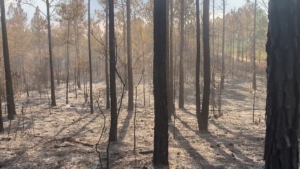 Preliminary findings indicate that thirty-eight-point nine percent of the reserve was affected by the fires. According to Habet, most of the trees in these areas are recoverable and will regenerate and produce seedlings within the next two months. For the few trees that are severely damaged, he anticipates that those will have a longer recovery time.
Preliminary findings indicate that thirty-eight-point nine percent of the reserve was affected by the fires. According to Habet, most of the trees in these areas are recoverable and will regenerate and produce seedlings within the next two months. For the few trees that are severely damaged, he anticipates that those will have a longer recovery time.
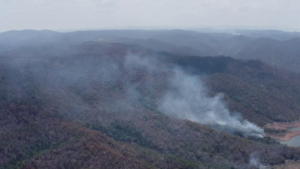 Orlando Habet
Orlando Habet
“From what we understand is that within three or four months, you will start seeing the seedlings already. Of course, many times on natural conditions, you don’t come out to do the thinning unless you do the planting. But the thinning is actually done by way of doing your burns and prescribed burns are very important. And it is something also where we are looking at lessons learned. Areas which possibly haven’t been burned for a while have now been burned purposely. But also the department is looking at maybe addressing some of these burns. And prescribed burns during the cooler part of the year, maybe November, December after the rainy season has ended to do some of those burns so that then you can still eliminate the extra material and fuel is on the ground before the dry season commences.”
While the teams continue their efforts to contain the few remaining fires, the public is advised to proceed with caution if they are planning to visit the reserve within the next week. Britney Gordon for News Five.




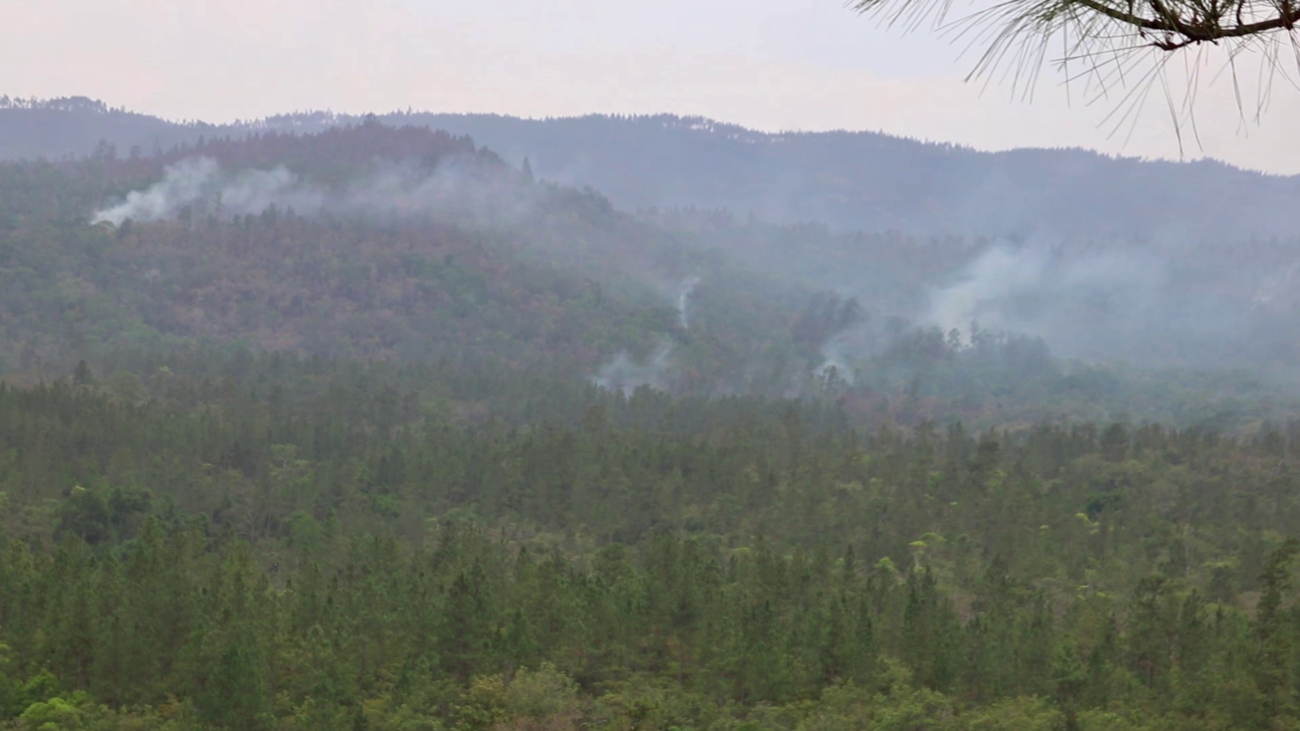
Facebook Comments